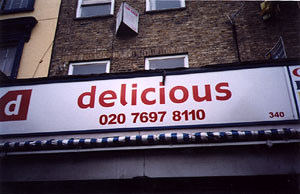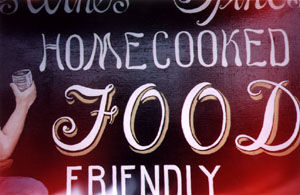
 |
Richard Wentworth + Phil Crang
Caledonian Culture: notes on landing with Richard Wentworth
We Geographers love places. Conceptually, the idea of 'place' is at the heart of geographical scholarship. Intellectually, it offers an explanation of what Geography is and its particular role in academic divisions of labour. Emotionally, it is what drives many Geographers on, concerned as we are with studying specific places, sometimes through whole careers. But Geographers are also wary of places: nervous about being co-opted into the sentiments and politics of localism, defensive about being seen as intellectually parochial. So, we deconstruct the idea of place, showing how place is ideological, inclusive only through being exclusive, locally distinctive because differently globally connected. We bang on and on about how much place - now converted from the plurality of places into a singular, monumental concept - matters. And we run a mile if there is even the slightest chance of being tainted with the sorts of pride in place generated and exploited by nationalism or regionalism.
I have never really loved a place. I grew up on a farm in Devon and I can still see the curves of its hills, the twists of its lanes, and the reds of its soil. But when I lived there, my head was in books and, more often, the tv. I loved the Banana Splits, Starsky and Hutch and - oh, the shame - Motor magazine. I wanted to get out of Devon. Now I live in London, but I'm not a Londoner. I try listening to London radio stations, reading Peter Ackroyd and Iain Sinclair, having London Underground memorabilia, but obviously that's just the place attachment of someone trying too hard. On the other hand, my surroundings are enormously important to me. I spend a lot of time alone, relating to place not people. So maybe I do love place - but not the named area, so much as the everyday peculiarities and features I encounter. My place is made up of the paving stone down the street that wobbles when you stand on it, the peeling paint on the Vietnamese take-away across the road, the old sofa cushion chucked into the bushes round the corner, the adverts in the newsagent's window. Perhaps I shouldn't admit to it, but I shed a tear when my local garage stopped being a blue and yellow Jet and became a red and black Texaco.
 |
I came to meet Richard Wentworth on the Caledonian Road in Camden, London with agendas. Formally, these were a couple of long and on-going studies looking at the sorts of place attachments and detachments evoked by everyday 'foodscapes' in London. One of these studies was centred on the nearby Essex Road and Upper Street of Islington. Informally, however, I was intrigued by how Richard's thousands of photos of the Caledonian Road opened me up to the sorts of everyday materials of place that my own studies, despite my intentions, seemed almost designed to obliterate. I sought to know more about his methodology, what governs his eye, and how he files and selects images. I wanted to linger with the kind of urban material culture he documents: manhole covers, the contents of junk and clearance shops, the spray markings of utility personnel on pavements. More specifically, I wondered how he had or would picture the 'foodscapes' of the Caledonian Road. Somewhat crudely, I was already 'placing' his aesthetic in opposition, or perhaps more properly surplus to the sort of food geographies promoted by the regionalisations of cuisine that dominate food writing. I was hoping for a picturing that would be open to less cultured food cultures and things and whose geographical references would be more polyphonic. Symptomatically, his place spills out of and beyond the pages of Elizabeth David. Spookily, he pictured ice cream cabinets, and I then remembered how as a child I used to stand memorising the Walls display of brands and prices in the village shop.
I look forward to carrying on with walks, talks and slide shows with Richard. He visualises a kind of cultural geography I want to inhabit more.
Philip Crang